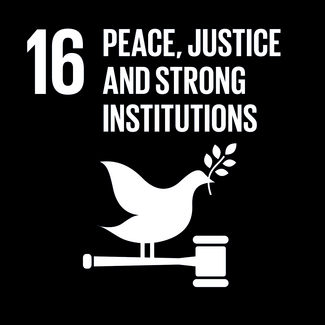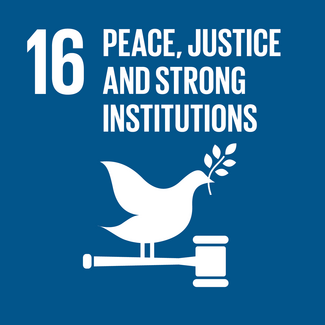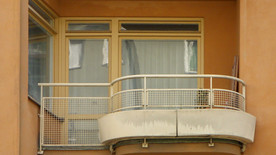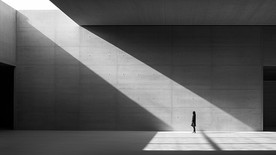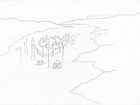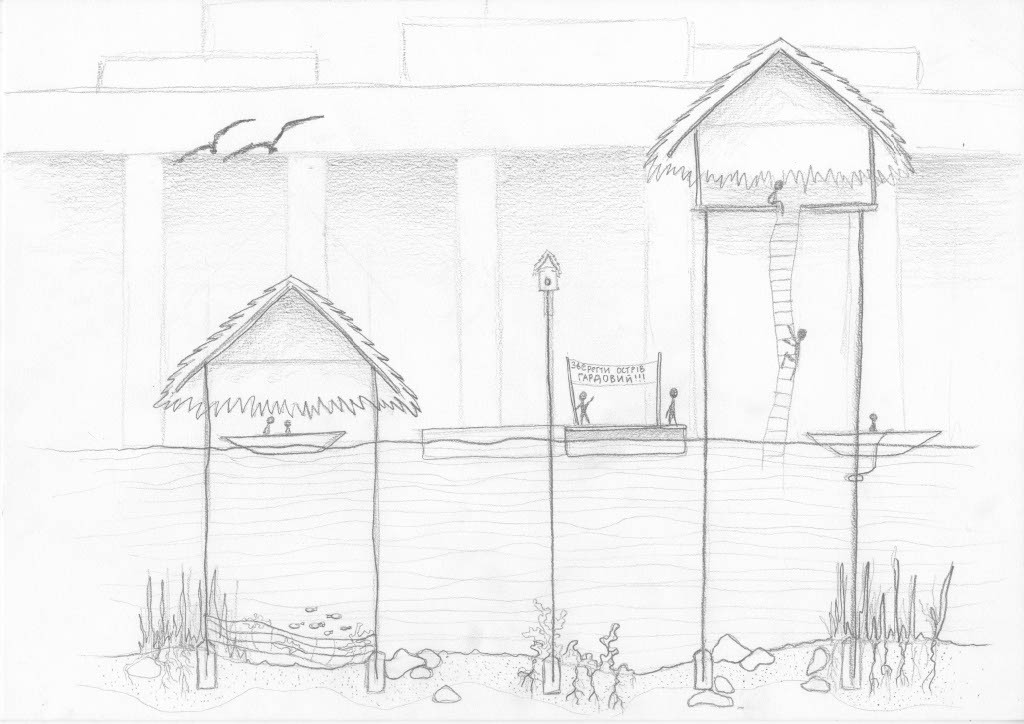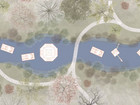
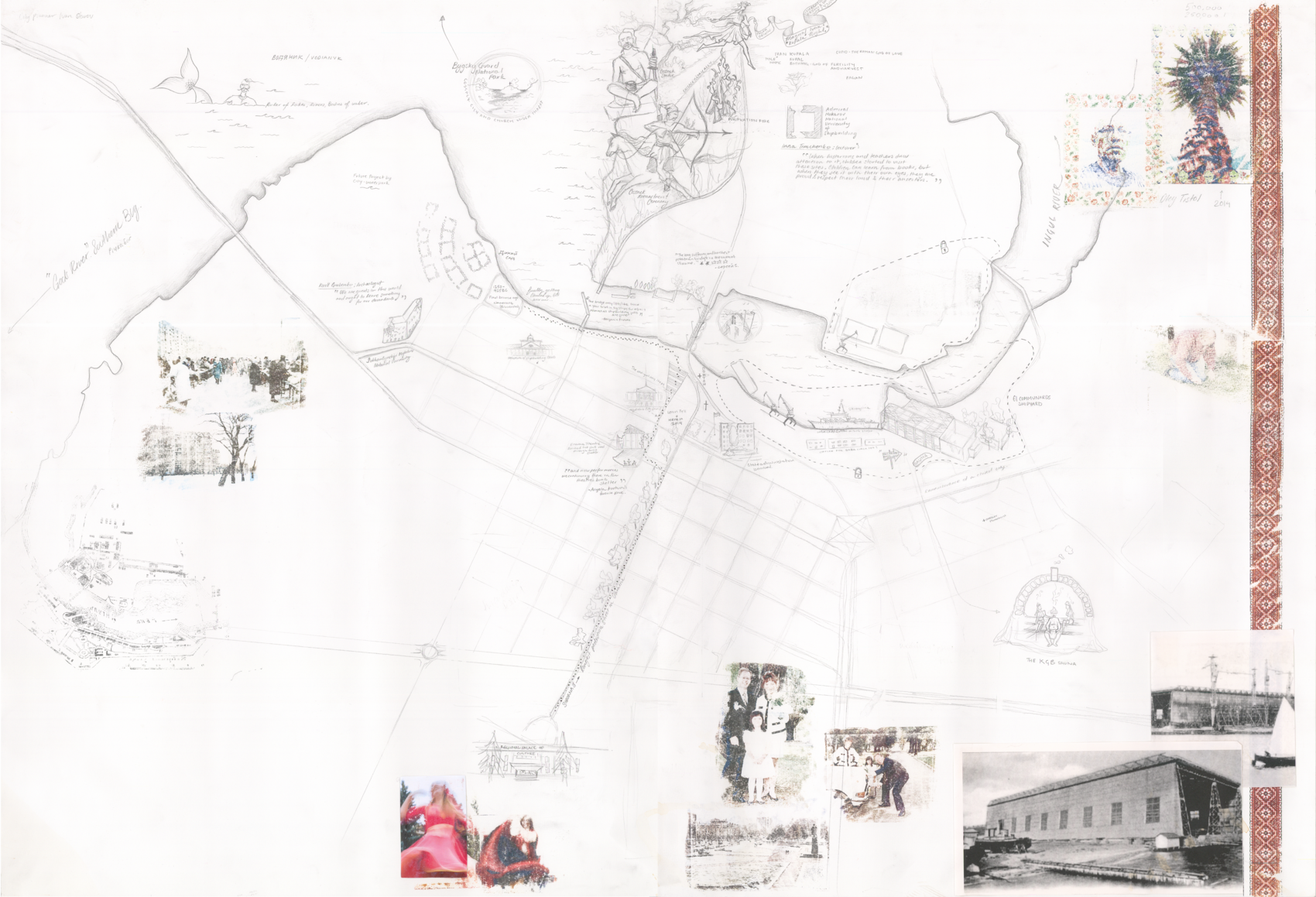
Memories and Monuments Along Gods River
The possible flooding of a historically and ecologically important landscape in Ukraine by the South Ukraine Energy Complex threatens biodiversity and the National and EU laws of nature protection by proposing raising the water level of the national park by four meters. This would destroy a wide range of habitats in the area, worsen the water quality, decrease tourism in the area, disturb bird migration, and have many more detrimental effects.
The proposition is multi-use pavilions situated between a historical island at risk of being completely flooded, and the dam threatening its flooding. It is used by multiple types of people, animals, and species who share the common interest of protecting the physical land of Ukraine.
The pavilions represent modern versions of monuments. I studied the Monuments in the nearby Mykolaiv to find what is monumentalized is romanticized versions of the past, rather than what is currently of importance. The pavilions change through the seasons, they change if the river is flooded, they grow with seeds over time, and develop for different animal groups and people.
The project's sister site is the Alley of Military Glory located in Victory Park, Mykolaiv. It aims to criticize monument culture while bringing attention to what is happening in the Bugzkyi Gard National Nature Park just a two-hour drive up Gods River. The project is proposing flooding the Alley of Military Glory, bringing fragility to the otherwise permanent war memorials. This creates distance between the people visiting the monuments, and the monuments themselves, which are of violent nature. There is also the addition of a new monument; a collage of two existing monuments. A pedestal of the destroyed Lenin Monument is placed with the addition of the Cossack monument from an otherwise empty alley to join the other monuments. This new monument represents the two powers at play in the first site, the National Park and the Hydro Power Plant.
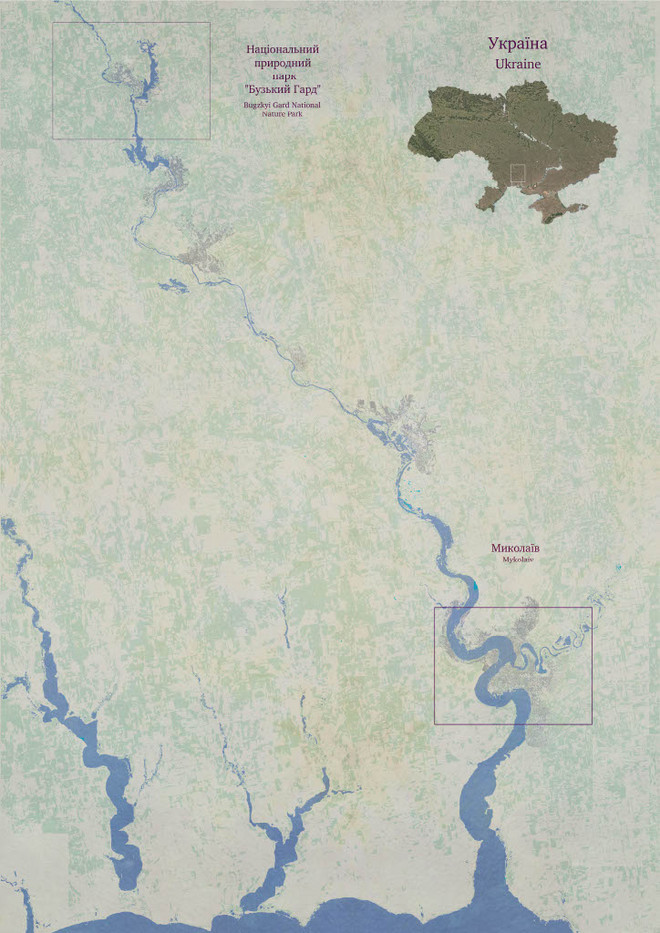
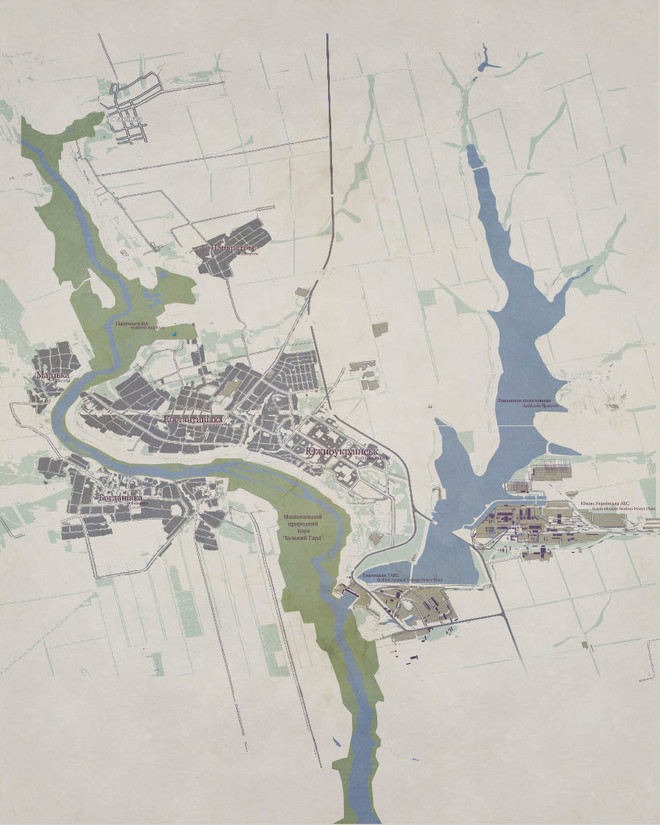
“If we throw away the church that our ancestors visited and throw away the field they plowed, all will be destroyed. And when all is destroyed, we will be a nation with no history and no memory, with no right to the future.”
-Sergiy Paraskun, ATO Veteran
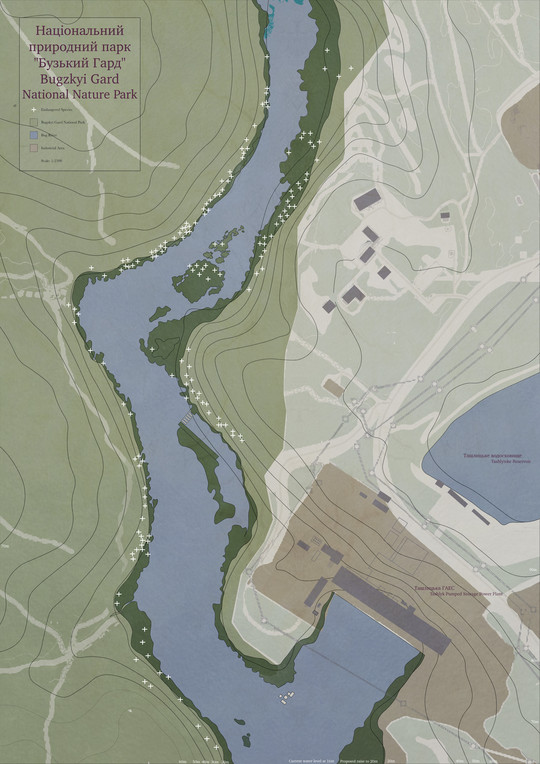
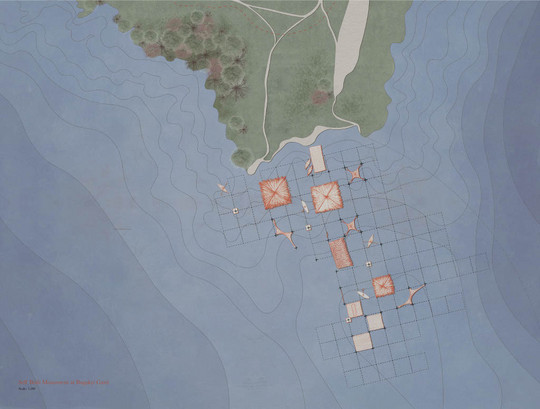


“Bugsky Gard is a microcosm of our struggle for independence of Ukraine. The plan to flood the national park is a reflection of
all that is happening in Ukraine today.”
-Oleg Kravitz, ATO Veteran
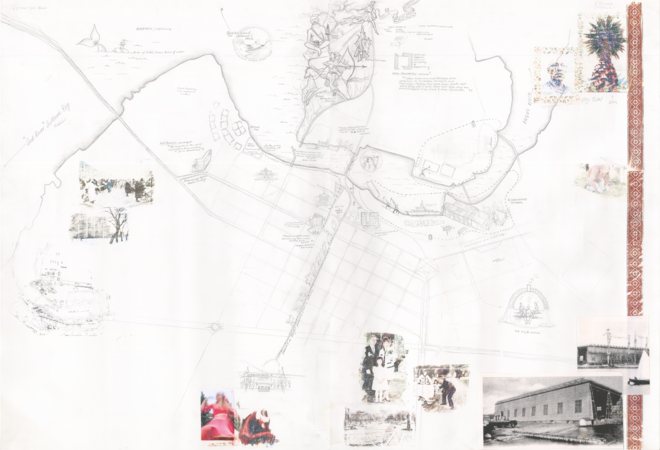
“Because in the past, teachers have taught us that Mykolaiv was the center of shipbuilding. Our Cossack heritage was not shown to us. We did not know of the significance of our land. When historians and teachers drew attention to it, children started to visit the sites. Children can learn from history books, but when they see it with their own eyes they are proud and respect their land and their ancestors.”
– Quote from Inna Tichenor,
lecturer at National Shipbuilding University,
taken from “Gods River” film.

Definition of a Monument:
Originally the term refers to a burial place, rather than a statue or building.
Comes from the word memory.
“Something that reminds”
Form of root- “men” - to think - to evoke meaning
Latin moneo, monere, which means
‘to remind’
‘to advise’
‘to warn’
Modern word is correlated to something of extraordinary size and power, but does it always have to be?
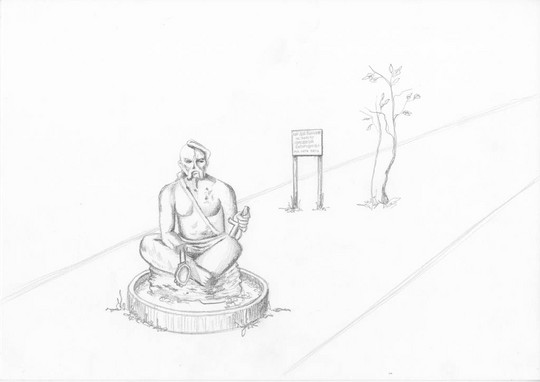

Det Kongelige Akademi understøtter FN’s verdensmål
Siden 2017 har Det Kongelige Akademi arbejdet med FN’s verdensmål. Det afspejler sig i forskning, undervisning og afgangsprojekter. Dette projekt har forholdt sig til følgende FN-mål









